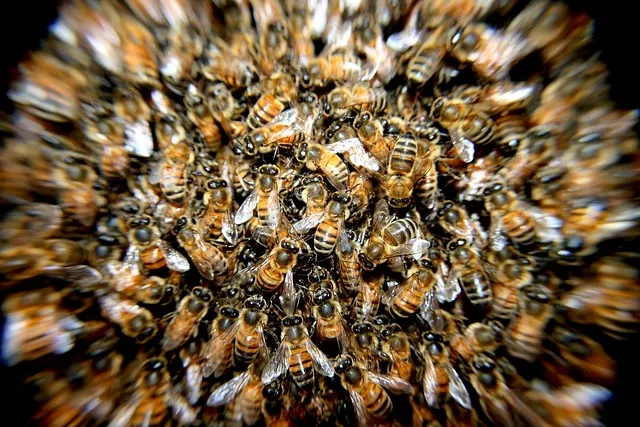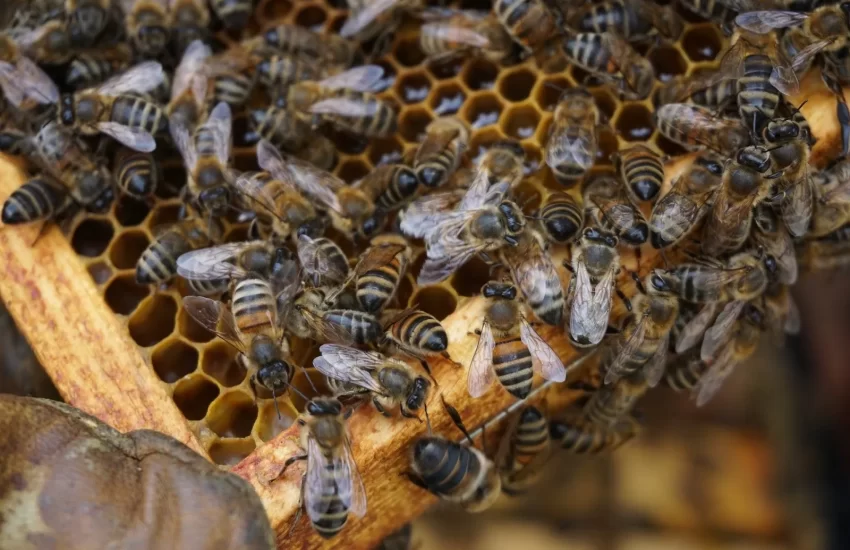How do you keep moisture out of a beehive in the winter?
Moisture in the hive is usually a great colony killer in winter months. It is brought by condensation of water vapor as it rises from the bee cluster and cools at the phase between the warmer and colder air. The interphase in most hives is usually situated at the inner cover. The moisture buildup kills bees if it pours down on the cluster.
While they can tolerate cold temperatures to some extent, it is impossible to survive when they are wet. This is one of the reasons why beekeepers should avoid feeding their colonies with liquid feed in winter. In summer, excessive moisture build-up is not recommended since it makes the honey ripening process more difficult.
Similar Articles you may like to read –
How to wrap a beehive for cold winters
How do you winterize a beehive?
Can a bee nuc survive the winter?
How many bees should be in a hive for winter? How many brood boxes do you need for winter?
How do you keep moisture out of a beehive in the winter?
Placing Substrates Above the Inner cover
Beekeepers place various substrates in the space above the inner cover to soak the excess moisture. You can choose from many materials, such as newspapers, hay, straw, shavings, compressed cardboard, etc. Depending on the weather, newspapers can get soaked fast and should be replaced once a week to prevent mold.
Using a Quilt Box
A quilt box is a wooden box placed on the top box of the hive in winter. It is filled with an absorbent material held by a screen. It allows air to flow over the material, carries away moisture, and prevents condensation from forming on the top.
Using a Moisture Board
It is a wooden structure containing an absorbent board material often used in place of the inner cover. While it is very effective, it is pricey.
Preventing the Sides of the Hive from Getting cold
This is attained by using insulating material around the hive, such as styrofoam or tar paper. Using a rigid insulation foam board to insulate the inner cover prevents cold air from passing through the cover. Warm air will not condense on the bottom side of the cover and pour down on the bees.
Why is ventilation vital in a bee colony?
A beehive colony’s survival is all about balancing the hive parameters. When it is too cold, the bees huddle together to keep warm. When the inside of the hive is too hot, bees will beard outside the hive. While ventilation is essential all year round, it is vital in winter. It helps to keep moisture under control in the hive by allowing excess moisture to escape. This provides some remedy to some extent for humidity control. Wrapping your hive tightly in winter will keep a lot of moisture inside. Ventilation is also vital in summer. Very high temperatures in the hive cause the brood to die. Some sections of the honeycomb collapse.
More articles you may like to read –
How many eyes does a honey bee have?
Bee Hive Inspection Guide. How and when to do inspections?
Varroa Mite Treatment for Honey bees
Best Essential oils for Hives
How do honey bees prepare for winter?
They prepare in the warm season by keeping sufficient honey stores. To minimize the usage of honey stores, workers kick out the drones from the colony since their input is not needed this season. They also fill any crack or crevice with propolis, a sticky substance from tree bark. When winter hits, the bees cluster and keep the queen at the center to ensure her survival.




